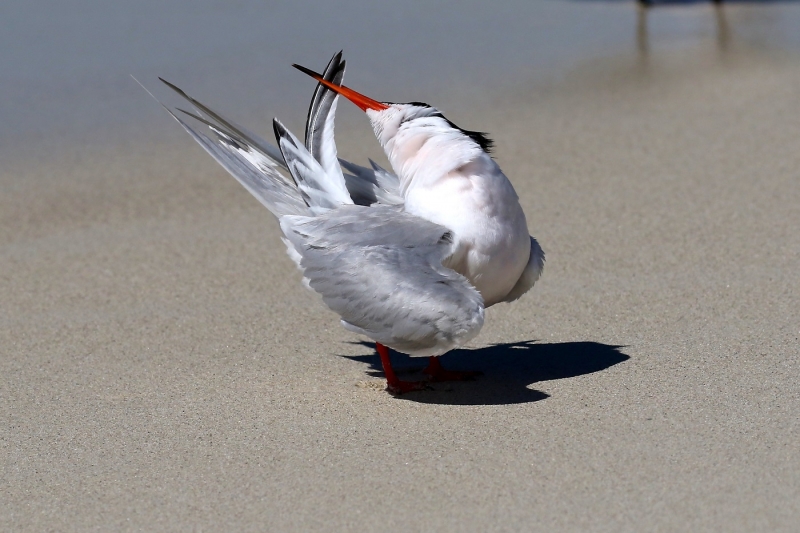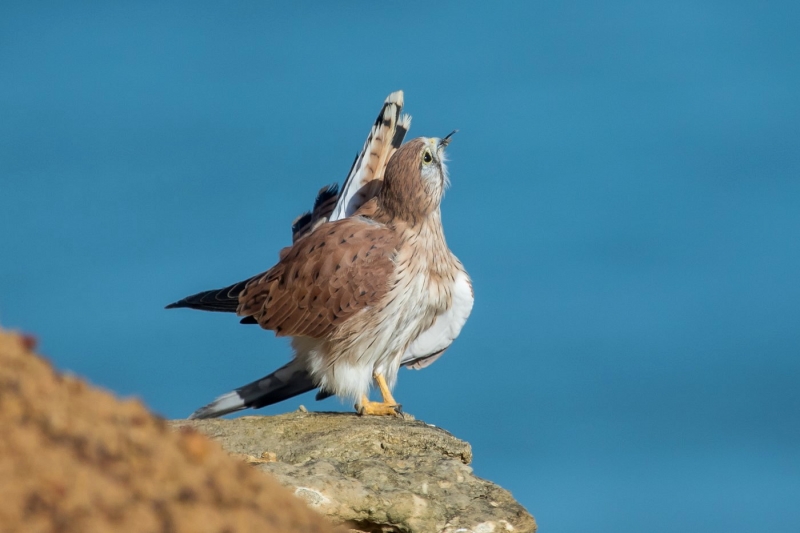Each time I judge a competition, the task becomes increasingly more difficult with the proliferation of high quality images submitted to competitions. I congratulate every member who submitted their images to this competition.
The theme of preening birds is clear and precise, which in this sense made the competition easier to judge than some previous competitions. The word ‘preen’ is a verb and its definition is that of a bird tidying and cleaning its feathers with its beak. Therefore, images in this competition should clearly depict this behaviour. Observers of preening are also confronted, more often than not, with a bird in a dishevelled condition as the behaviour unfolds. Similarly, the contortions that a bird must adopt to preen each and every feather contributes to the degree of difficulty in capturing images with a ‘stand-out’ or ‘wow’ factor. In judging this competition, I have adhered to the definition of ‘preening’, ignoring the rarity of the species depicted, and have applied a weighting for creativity in the overall composition.
When judging a competition with such high-quality images as this one, I review the entire portfolio of entries in a single pass slide show and then review each image at full-size to assemble an initial short-list. I then return to the competition the following day and review every image a second time at full-size and make a second pass short-list, which is then compared to the initial list before making a final selection.
Before I announce the awards, I take this opportunity to make special mentions for three entries. The first, and in no particular order, is ID 26015, Glossy Black-Cockatoo by Pam Kenway. This is a captivating image, depicting three birds engrossed in preening and ‘billing’. The middle bird, which is preening, is facing away from the two birds engrossed in bill contact, and being relegated to what most of us would define as ‘the meat in the sandwich’. A most amusing capture. The second image is ID 25911, by William Betts, depicting two seabird species, Black-browed Albatross and Yellow-nosed Albatross, engaged in preening ‘upon the high seas’. A rare and unusual capture – well seen. The third image is ID 25737, by Richard Barton, a Brown Thornbill with an isolated flight feather in its bill and the caption - “Ooops, was that supposed to happen?”. Great capture with an amusing caption. This image would have made the final cut had the head and eyes been in sharp focus.
Now to the awards: There are two equal winners, very different compositions but both equally deserving of the top award.
Winner (tied): Roseate Tern – William Betts (Image ID 25912)
This image is reminiscent of a porcelain sculpture with a charming arching structure of the head and wing. The image was shot under strong daylight as indicated by the shadow beneath the bird. The texture of the sand is subtle and the blue-grey of the water blends nicely with the colouration of the wings. The red of the bill is the accent that adds an additional element to this image and the central position of the bird works well. I also like the subtle shadows of the unseen structures in the top right-hand corner. The photographer is to be commended for retaining a reasonable degree of detail in most of the white feathers, and with sufficient rose colouration in the breast feathers to clearly identify the species. This is the first time I have awarded the top score to an image where no eyes are visible. Yes, the image can be described as ‘arty’ and may not appeal to everyone, but it does it for me.
Winner (tied): Galah – Jeff Groves (Image ID 25692)
With an equal score to the other winning entry, this image has much to commend it. The birds are engaging with the three individuals being captured at ‘eye-level’, with the two birds on the outer margins preening the male in the middle. It is difficult to identify the sex of the bird on the left-hand side, which could be either a young bird or second female. In either case this male is not complaining about the attention. The colours of the birds and the eucalypt are subtle and complement each other perfectly. Perhaps the tails of the two outer birds might have been included in the image but as both are equally cropped, either in post processing or at the time of capture, this is not a negative element for me. The small negative space on the left-hand margin provides depth for the image - well captured and deserving of the top award.
Highly Commended: Brown Thornbill – Richard Barton (Image ID 25724)
An intriguing image, reminiscent of being at the theatre as the villain enters with a cloak hiding all but the eyes. The ‘eye’ in this image is the primary element, superbly sharp, and it certainly captures one’s attention. The position of the eye in the composition adheres to the rule of thirds; not that it should but in this image the bird not being centrally located works best in my view. Similarly, the negative space on the left-hand side works for me as the green tones are consistent across the image and the background is not ‘busy’. The highlights between the leaves are well controlled and help to accentuate the detail in the bird’s feathers.
Commended: Striated Fieldwren – Sandy Castle (Image ID 25813)
A nicely composed image, beautifully sharp and with background tones that contribute to this tranquil scene. The rear view of the bird affords an opportunity to showcase the typical posture adopted by birds in order to access the ‘oil gland’ known as the uropygial gland, located dorsally at the base of the tail. With the branch leaning from left to right, I might have been tempted to crop closer on the left and apply a square format by removing the negative space on the right which contributes little to the image.
Commended: Nankeen Kestrel – John Eley (Image ID 25663)
Another well-constructed image of a bird in the process of ensuring its feathers to ensure they are maintained in ‘tip-top’ condition. The tail might look to be at an odd angle but this is its typical position when tail feathers are pulled through a bird’s bill. The bird is sharp against a contrasting blue sky, which is a striking aspect in this image. The warm morning light affords an attractive tone to the image overall. The central position of the bird, however, is not ideal. By cropping much of the distracting out-of-focus foreground rock from the left side of the image, the kestrel would be shifted off-centre making for a more pleasing composition, and one in which there is still an adequate space for the bird to move off the edge of the cliff to the right.
Commended: White-faced Heron – Con Duyvestyn (Image ID 26089)
Often the best images are those that have an element of simplicity. This image focuses on the bill and the feathers being preened – simple and to the point. The eye, whilst partially shielded by the eyebrow ridge, is clearly focussed on the task at hand. The image is sharp and well exposed, clearly depicting the texture and tones of the feathers. Whilst there is a strong shadow across the neck of the bird, this is not a distracting element as the head, bill and feathers being preened are nicely illuminated. The photographer notes that a more severe crop was required to remove distracting elements in the image and the current crop dimensions work reasonably well. A squarer crop would also work for this portrait-like composition.





